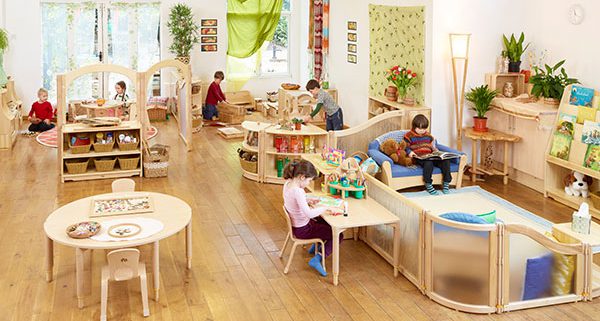The Reggio Emilia approach to education is a widely known philosophy that has gained increasing popularity in recent years. Renowned for its child-centered approach to learning, this approach originated in the small Italian town of Reggio Emilia following World War II and has since spread to schools across the globe.
In this article, we delve into what sets the Reggio Emilia classroom apart and why it has garnered increasing attention and adoption in the United States and beyond.
The History of the Reggio Emilia Approach
The Reggio Emilia approach was founded by Loris Malaguzzi, a teacher and philosopher, in the aftermath of World War II. Malaguzzi believed that children are born with a natural curiosity and that it’s the role of educators to nurture this curiosity and help children learn through exploration and discovery.
The approach was developed in collaboration with parents in Reggio Emilia who wanted a new kind of education for their children.
The Reggio Emilia Classroom Environment
One of the most distinctive features of the Reggio Emilia classroom is its environment. The classroom is seen as the third teacher, after the child and the teacher.
The environment is carefully designed to promote learning and creativity, with natural materials and open-ended toys that allow children to explore and discover. The classroom is also filled with artwork and documentation of the children’s learning process, which serves as a way to honor and respect their ideas and work.
The Role of the Teacher in the Reggio Emilia Classroom
In the Reggio Emilia classroom, the teacher is seen as a guide and facilitator of learning rather than a source of knowledge. Teachers observe children, listen to their ideas and questions, and provide support and resources to help them explore and learn. Teachers also work closely with families, forming partnerships to support children’s learning and development.
The Reggio Emilia Curriculum
The Reggio Emilia curriculum is emergent and child-centered, meaning that it is developed based on the interests and needs of the children in the classroom. Teachers design learning experiences that allow children to explore and discover, and they document children’s learning processes to inform future experiences. The curriculum is also interdisciplinary, with a focus on integrating different subject areas and fostering critical thinking and problem-solving skills.
Benefits of the Reggio Emilia Approach
The Reggio Emilia way of teaching has been shown to have numerous benefits for children, including:
- Fostering creativity and imagination
- Developing critical thinking and problem-solving skills
- Promoting collaboration and communication
- Building a love for learning and a sense of wonder
- Honoring and respecting children’s ideas and work
- Cultivating a sense of community and belonging
These benefits make the Reggio Emilia approach an attractive option for parents, educators, and children alike.
The Magic of the Reggio Emilia Classroom
The Reggio Emilia approach is a unique and effective philosophy of education that values the child as an active participant in their own learning. By promoting creativity, critical thinking, and collaboration, the Reggio Emilia classroom fosters a love for learning that can last a lifetime. The carefully designed environment, emergent curriculum, and partnership with families make this approach an excellent choice for any child, regardless of age or background.
So, if you’re looking for an educational approach that will engage and inspire your child, the Reggio Emilia classroom might be just what you need.
Reggio Emilia Classroom FAQs
Here are some frequently asked questions about this teaching method.
Is the Reggio Emilia approach suitable only for preschoolers?
No, the Reggio Emilia approach can be adapted for children of all ages. While it is commonly associated with preschool education, the philosophy can be applied to elementary, middle, and even high school classrooms. The emphasis on child-led learning, creativity, and critical thinking is relevant at any age.
Is the Reggio Emilia approach only for certain types of learners?
No, the Reggio Emilia approach is designed to be inclusive of all learners, regardless of their abilities or backgrounds. The approach values each child’s unique perspective and encourages collaboration among peers. Children with different learning styles and abilities can all benefit from the Reggio Emilia approach.
Is the Reggio Emilia approach expensive?
The cost of implementing the Reggio Emilia approach can vary depending on factors such as location, class size, and resources available. However, many schools and educators have found ways to adapt the approach to fit within their budgets.
The approach emphasizes the use of natural materials and repurposing existing resources, so it can be a cost-effective option. Additionally, the long-term benefits of the approach, such as increased love for learning and critical thinking skills, can be invaluable.
Where to Find a Reggio Emilia Program
If you’re interested in finding a Reggio Emilia program for your child, there are a few resources available. You can search online for programs near you or explore the network of accredited schools within the Cadence Education network.
Cadence Education has Reggio Emilia programs in Richwood, Taylor Mill, Highland Heights, Florence, and Fort Thomas, Kentucky. You may also get in touch with us to learn more about the program and find out if we have an accredited partner in your area. Contact us today.

